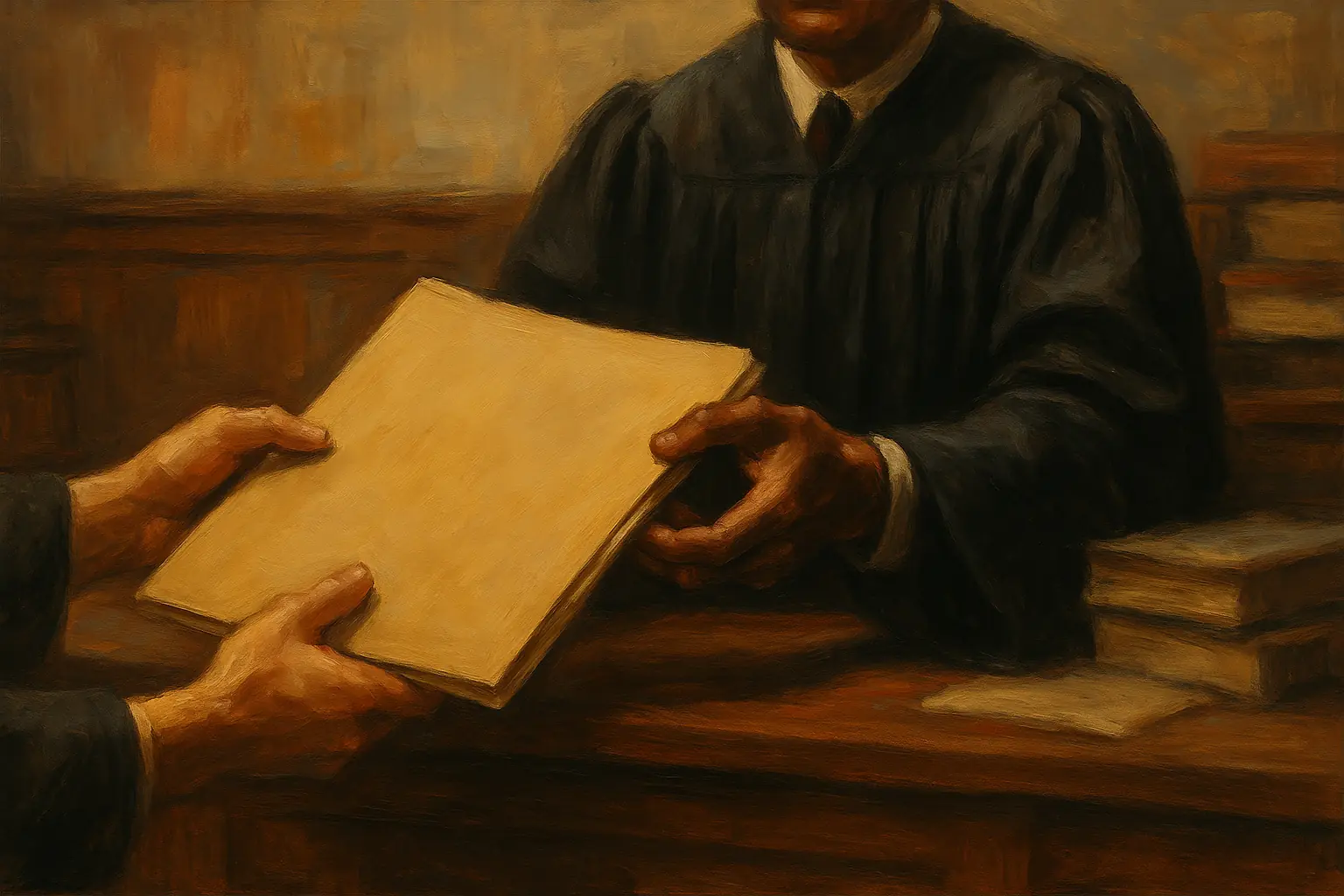Introduction
When a party appeals a decision in a Texas court, it’s not a fresh start. Appeals aren’t do-overs. Instead, appellate courts operate under well-established rules that define what kinds of mistakes they can correct—and how closely they should examine the original decision. These rules are called standards of review.
Understanding these standards is critical not just for appellate lawyers and judges, but also for any citizen trying to grasp how the Texas judiciary operates. Whether you’re evaluating the odds of an appeal or just trying to make sense of legal news, the concept of standards of review opens a window into how judicial power is balanced and how errors are—or aren’t—fixed.
In this article, we’ll break down the major standards of review used in Texas appellate courts, explain why they exist, and show how they work in real-world cases. While these doctrines can be technical, they’re grounded in common-sense principles of fairness, institutional design, and the rule of law.
What Is a Standard of Review?
In everyday terms, a standard of review is the rule an appellate court uses to decide how much to second-guess the decision made by a trial court or jury.
If the appeal involves a purely legal question—say, the meaning of a statute—the court may take a fresh look from scratch. But if it involves a trial judge’s discretionary call or a jury’s judgment about the facts, the appellate court will be more cautious.
Not all errors are equal: Some errors get an appellate court’s full attention. Others won’t justify reversing a decision—even if the appellate judges think the lower court was wrong.
Each standard of review sets a level of scrutiny. In Texas, the three most common are:
- De novo: No deference at all. The appellate court decides the issue from the ground up.
- Abuse of discretion: The appellate court asks whether the trial court acted unreasonably or outside the bounds of legal judgment.
- Sufficiency of the evidence: The appellate court checks whether there was enough evidence to support the decision—either legally or factually.
Together, these standards help preserve a fair and stable legal process, making sure appeals focus on real errors, not mere disagreements.
Advertisement
De Novo Review
In Texas appellate courts, a de novo review means the judges are starting from scratch when examining a legal question. Unlike other forms of appellate review that show deference to the trial court, de novo allows the appellate court to form its own conclusions without relying on the lower court’s reasoning. The phrase itself, Latin for “from the beginning,” reflects this clean-slate approach.
This standard typically applies to questions of law—such as interpreting a statute or deciding whether a legal claim is valid based on undisputed facts.
In these situations, appellate judges are not bound by the trial court’s conclusions. Instead, they independently analyze the legal issue and apply the law as they understand it. This preserves consistency in legal interpretation across different courts and ensures that parties receive a uniform application of the law.
For example, subject-matter jurisdiction is a question of law that is subject to do novo review. An appellate court reviews the pleadings and must consider relevant evidence to resolve the jurisdiction question. Likewise the issue of standing—the right of a party to bring a lawsuit before a court—is subject to do novo review.
Abuse of Discretion
Not every decision made by a trial court turns on strict rules of law. Many involve matters of judgment—rulings where there is no single correct answer, but a range of reasonable options. In such cases, appellate courts in Texas apply what is known as the abuse of discretion standard. This means that even if the appellate judges might have ruled differently, they will not overturn the decision unless the trial court acted arbitrarily, unreasonably, or without reference to guiding legal principles.
The rationale behind this deference is grounded in the trial court’s role as the primary manager of the case. Trial judges have firsthand exposure to the parties, the evidence, and the flow of the proceedings. They are better positioned to evaluate the context of a decision—such as whether to admit a late-disclosed piece of evidence, whether to grant a continuance, or how to sanction a party for discovery violations. The appellate court, by contrast, reviews a paper record without the benefit of live observation, and must be cautious not to insert its own preferences where discretion is legally entrusted to the judge below.
This standard is frequently applied in procedural matters, including rulings on discovery disputes, motions for new trial, determinations of witness competency, and whether expert testimony meets the admissibility standards. It also governs decisions involving attorney’s fees, scheduling orders, and the exclusion of evidence based on relevance or prejudice. Even in high-stakes contexts, such as whether to declare a mistrial or sever a party from a lawsuit, the appellate court’s role is limited to ensuring that the trial judge stayed within the bounds of reasonable judgment—not to reevaluate whether the “best” choice was made.
In practical terms, demonstrating an abuse of discretion is a high bar for any party appealing such rulings. The challenger must show that no reasonable judge could have come to the same conclusion, or that the trial court failed to follow the relevant legal framework entirely. Mere disagreement or dissatisfaction with the outcome is not enough.
This standard reflects an important division of labor in the judicial system: trial courts are entrusted with managing the day-to-day affairs of litigation, while appellate courts focus on correcting legal errors that fall outside the margin of judgment.
By respecting the trial court’s discretion, appellate courts preserve judicial efficiency, reinforce trial-level authority, and promote stability in the litigation process.
Legal and Factual Sufficiency of the Evidence
One of the most common grounds for appeal in Texas is the claim that the trial court’s judgment—whether rendered by a jury or a judge—was not supported by sufficient evidence. Yet not all challenges to the evidence are treated the same. Texas appellate courts distinguish between legal sufficiency and factual sufficiency review, each governed by its own doctrinal logic and scope of inquiry. These standards are particularly important in civil cases, where the outcome often turns on the jury’s weighing of conflicting testimony or disputed facts.
Example: A jury finds that a contractor breached a contract. On appeal, the defendant says there was “no evidence” of breach. The appellate court looks only at the evidence supporting the verdict and asks whether it meets the bare legal minimum.
A legal sufficiency challenge, sometimes described as a “no evidence” point, asks whether there was any legally adequate evidence to support the finding in question. In making this determination, the appellate court views the record in the light most favorable to the verdict and disregards all evidence to the contrary.
The goal is not to reweigh the evidence but to ensure that a minimum threshold has been met—one that allows a reasonable jury to reach the conclusion it did. If the record contains more than a scintilla of evidence in support of the verdict, the legal sufficiency challenge must fail. This standard is deferential to the factfinder’s role, but it functions as a safeguard against verdicts that lack any legitimate evidentiary support.
Factual sufficiency review, by contrast, permits a broader examination of the record. It requires the appellate court to consider all the evidence—both supporting and opposing—and to determine whether the verdict is so contrary to the great weight and preponderance of the evidence that it is clearly wrong and unjust.
This standard still respects the factfinder’s prerogatives but allows for reversal in cases where the evidence, taken as a whole, simply does not support the judgment with the reliability that justice demands. Factual sufficiency review is typically applied in bench trials and civil jury verdicts involving questions of damages, property rights, or other issues decided under a preponderance-of-the-evidence standard. Unlike legal sufficiency, which turns on a bare minimum, factual sufficiency is more qualitative and comparative in nature.
Together, these two standards help appellate courts calibrate their review of trial outcomes. They allow the court to guard against verdicts that are legally unsupported or manifestly unfair, while still preserving the constitutional role of the jury and the trial judge as the primary finders of fact. For litigants and attorneys alike, understanding the difference is crucial: the standard applied can often determine the likelihood of success on appeal.
Specialized Standards in Criminal Cases
In criminal appeals, Texas courts apply many of the same core standards as in civil cases, but the context of constitutional protections and the stakes of liberty demand heightened care. The principles of legal and factual sufficiency take on distinct forms in the criminal context, and Texas courts have developed specific doctrines to reflect those differences.
When reviewing the sufficiency of the evidence to support a conviction, Texas appellate courts apply a legal sufficiency standard that traces its roots to Jackson v. Virginia, a U.S. Supreme Court decision that remains binding in state criminal cases as a matter of federal due process. Under this standard, the appellate court must determine whether, after viewing the evidence in the light most favorable to the verdict, any rational trier of fact could have found the essential elements of the offense beyond a reasonable doubt. This test is not an invitation to substitute the appellate court’s view for that of the jury; rather, it serves to ensure that a conviction is not based on mere speculation, conjecture, or legally insufficient proof. The court looks only to the evidence that supports the verdict, drawing all reasonable inferences in favor of the prosecution.
Texas also permits factual sufficiency review in certain contexts, particularly in cases involving punishment-phase findings or issues not governed by the beyond-a-reasonable-doubt standard. However, factual sufficiency review of criminal convictions themselves has been substantially limited since the Texas Court of Criminal Appeals held in Brooks v. State (2010) that the Jackson standard supplants traditional factual sufficiency review in evaluating guilt. As a result, appellate courts now focus exclusively on legal sufficiency when reviewing whether the State proved its case at trial.
Beyond sufficiency of the evidence, another major standard in Texas criminal appeals concerns the review of trial errors. If a defendant asserts that the trial court made a mistake—such as improperly admitting evidence, denying a motion to suppress, or mischarging the jury—the appellate court must assess whether that error justifies reversal. Texas law distinguishes between constitutional and non-constitutional errors in this analysis. For non-constitutional errors, the court must reverse only if the error probably caused the rendition of an improper verdict or judgment. But if the error implicates constitutional rights—such as the right to a fair trial or the right to confront witnesses—the standard is stricter: the court must reverse unless it finds beyond a reasonable doubt that the error did not contribute to the conviction or punishment.
These doctrines of harm analysis reflect the broader philosophy of appellate restraint in Texas criminal law. Not every mistake leads to reversal. The appellate process is designed to correct material errors that undermine the reliability or fairness of the trial—not to re-try the case. In practice, the standards of review in criminal appeals are intended to strike a balance between upholding constitutional guarantees and respecting the factfinding role of juries and trial courts.
Strategic Impact of Standards on Appeals
Standards of review play a central role in shaping appellate strategy in Texas. They don’t just guide how judges evaluate a case—they also influence which arguments are worth raising, how those arguments are framed, and what kind of outcome is realistically possible.
An appellant arguing an issue subject to de novo review can press their legal reasoning directly, knowing the appellate court will reach its own conclusions. But when the standard is more deferential—such as abuse of discretion or sufficiency of the evidence—the strategy must shift. The argument becomes less about persuading the court that the decision was wrong in substance and more about showing that it either failed to meet the legal threshold for reasonableness or involved a significant process error that affected the outcome.
This strategic impact begins even before an appeal is filed. At trial, attorneys anticipating appeal must preserve objections and build a clear record with the applicable standard in mind. A well-preserved error may still go uncorrected if the standard of review sets too high a bar. For that reason, understanding these standards is not just an appellate concern—it affects decisions at every stage of litigation.
Why This Matters: A Structural View
Standards of review are about more than legal formalities. They reflect the core structure of American courts. Trial courts are where facts are developed. Appellate courts are where law is clarified and error is checked.
Without standards of review, appellate judges could re-decide every case. That would overwhelm the system, blur institutional roles, and undermine the credibility of trial courts.
By assigning different levels of deference, the legal system ensures that appeals focus on true legal errors, not just second thoughts. These standards ensure a balanced distribution of judicial authority, uphold the integrity of trial proceedings while maintaining statewide consistency in legal interpretations.
Legal Disclaimer
This article is provided for informational and educational purposes only and does not constitute legal advice. While Texapedia strives to present accurate and up-to-date information based on Texas statutes, case law, and procedural rules, readers should be aware that legal standards may change and that the application of legal principles can vary depending on the facts of a particular case. Individuals with legal questions or appeals in progress should consult a licensed attorney for advice specific to their situation.
Sources and Additional Reading
Jackson v. Virginia, 443 U.S. 307 (1979): A U.S. Supreme Court decision establishing the constitutional standard for reviewing the sufficiency of evidence in criminal convictions, binding on state courts.
“Standards & Scopes of Review,” Hon. Deborah Hankinson & Rick Thompson, The Advocate: Texas State Bar Litigation Section Report, Winter 2004: A comprehensive overview distinguishing standards of review from scopes of review, detailing the four primary standards recognized by Texas courts: de novo, abuse of discretion, legal sufficiency, and factual sufficiency.
“Standards of Review in Texas,” W. Wendell Hall, 29 St. Mary’s L.J. 505 (1998): An in-depth analysis of appellate standards applied by Texas courts, discussing their application across various trial court rulings and emphasizing their role in appellate advocacy.
Texas Rules of Appellate Procedure: The official procedural rules governing appeals in Texas state courts, providing guidance on timing, brief formatting, and scope of review.
Brooks v. State, 323 S.W.3d 893 (Tex. Crim. App. 2010): A pivotal case that eliminated factual sufficiency review of criminal convictions in Texas, reaffirming the Jackson v. Virginia standard as the sole test for legal sufficiency in criminal appeals.



